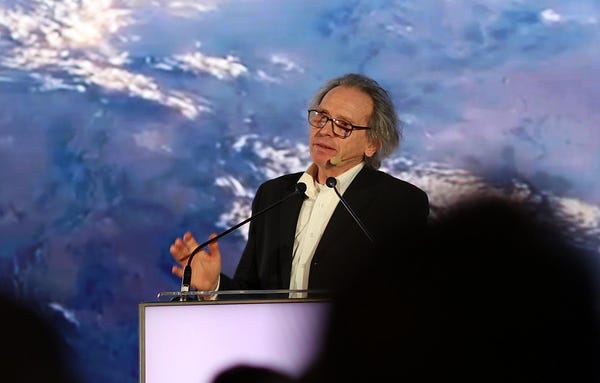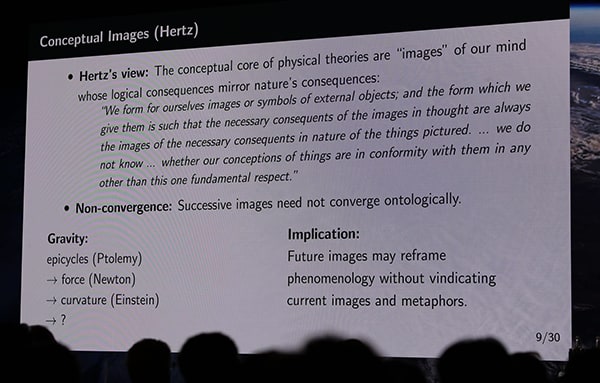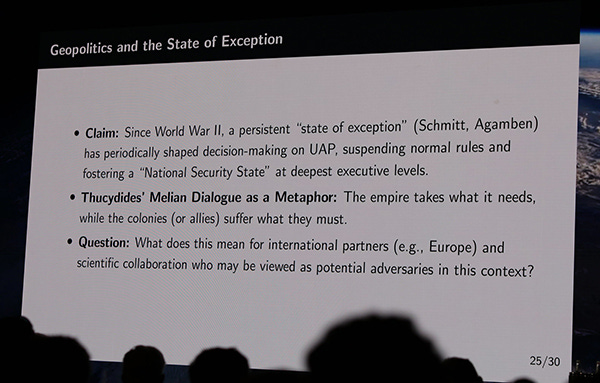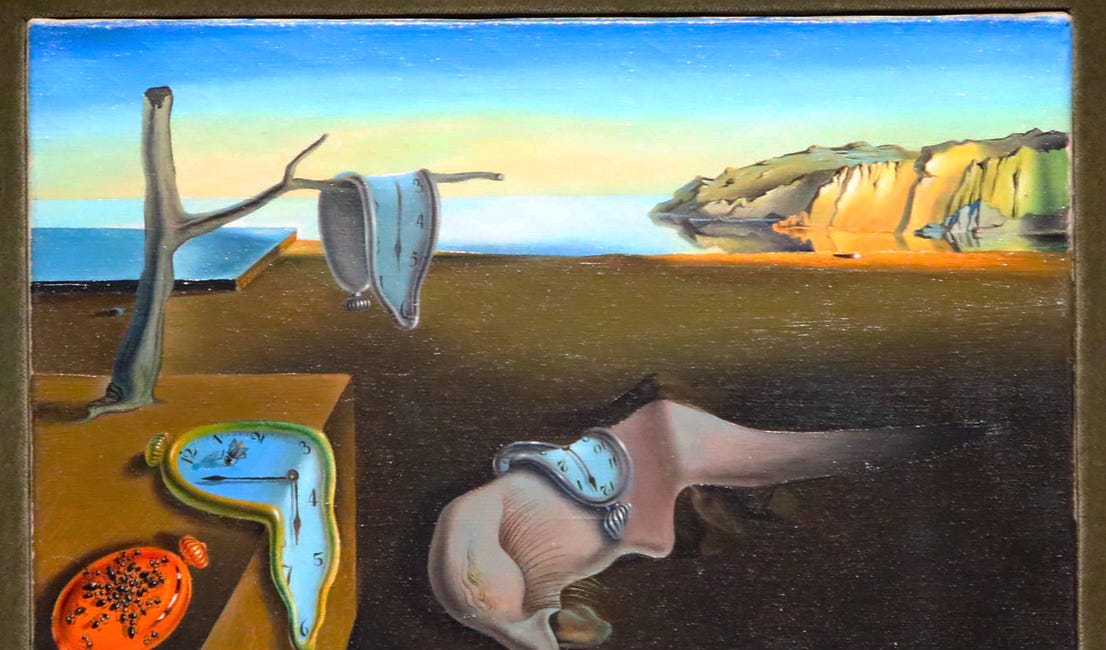Dr. Karl Svozil: 'Ad Astra Per Aspera - Plus...'
In addition to struggle, determination and hard work, visiting the stars will require humanity to invest in developing great imaginations and building new levels of scientific understanding.
For as long as he can remember, Karl Svozil has wanted to visit the stars. The idea of visiting them and the distant worlds on which they shine light drove him through his youth growing up in Austria and on into a remarkable career as a theoretical physicist. He just wanted to figure out how to get to the stars and return, fast and in-person.
“Here we are in Italy, where the Enlightenment was born,” Dr. Svozil said. “Humans as a species have to know. We want to know. And we must know. So, command your eyes to look into the subject.”
Judging by what he shared with the audience at the recent Sol Foundation Symposium in Italy, Dr. Svozil’s pioneering approach and groundbreaking ideas just may get him to the stars. If we are fortunate, he will take us along on the adventure.
Much of physics, especially theoretical quantum mechanics, takes place in the imagination. This includes finding ways of going to the stars, Dr. Svozil said. “I visualized breakfast here in Italy, lunch somewhere near the star Vega, and coming home for dinner with the family,” he said. Impossible to do now, but not necessarily so on another day.
Dr. Svozil is an honored professor emeritus of the Institute for Particle Physics at the Technical University of Vienna. He credited part of his investigative approach to Heinrich Hertz, the German physicist who proved the existence of electromagnetic radiation first proposed by English physicist James Clerk Maxwell. Hertz indicated in the preface to his classic work, “Principles of Mechanics,” the important role played by “pictures,” the mental constructs scientists develop when considering physical objects and concepts.
What Hertz mean by a picture is a scientific model that serves as a metaphorical “picture” of reality. The picture represents a theory’s hidden quantities and causal relationships through a system of symbolic representations. Hertz’s pictures are not a literal visual image but a mental and mathematical construct that scientists use to understand and predict natural phenomena, similar to how an artist creates a picture to represent something.
Typically, the pictures we see and can understand are just one step beyond what is currently understood, Dr. Svozil said. Yet, even if only one person understands a new picture, that understanding of the new concept can serve as a bridge to greater understanding. Shared by one and understood by a few at first, eventually all working in the field may come to accept the new picture as reflecting reality.
While he himself has never seen UAP or been contacted by a nonhuman intelligence, he added that he very much appreciates the reports of seemingly impossible actions often associated with the phenomena. Dr. Svozil said those who report UFOs and their actions may be providing “one picture beyond” the current state of scientific understanding.
Dr. Svozil said that he had tried, and failed, in certain areas. However, he is ready to try new avenues of research and promised to continue his theoretical work and intellectual pursuits, some of which have been inspired by the UFO phenomenon. He also refuses to limit his own quest for understanding by what others may think of his interests: “Air Marshal Sir Hugh Dowding, who was instrumental in the development of radar for air defense during the Battle of Britain, wrote: ‘If the scientists say it’s not possible, get me another set of scientists.’” Dr. Svozil said scientists today may need to take a similar approach in order to advance theoretical and experimental physics in order to understand what we today consider, “impossible.”
“If the scientists say it’s not possible, get me another set of scientists.”
— Air Marshal Sir Hugh Dowding, Chief of Fighter Command, Battle of Britain
Dr. Svozil described how in quantum mechanics, the physics that describes the basic building blocks of matter and energy, there are equivalences that must be maintained. However, new ways of understanding and changing what today seem incontrovertible physical properties may be found tomorrow, including the elusive unification of Einstein’s General Relativity with Quantum Physics.
The doctor specifically mentioned the Higgs Boson, discovered at the nearby CERN Large Hadron Collider, which gives mass to the various subatomic particles that interact with its field. Some of Dr. Svozil’s own experiments have shown that there are ways to change a particle’s mass that may hold promise for one day creating an “inertia-less” state of matter, which might then yield new ways for traveling at light speed, or changing directions, accelerations that would seem to an observer instantaneous and today are considered impossible.
Other experimental approaches may yet yield artificial ways of creating and utilizing wormholes, tunnels between black holes and white holes theorized to warp space and wrinkle time, that may allow a vehicle to “pop” into and out of our universe as the vehicle “skips” across various wormholes as it pops in and out traveling from one end of the cosmos to the other.
Please forgive any imperfections in the quotes and content above – I am going from written notes scratched down while trying to listen to one of the most fascinating lectures I have ever heard. So, while we await a transcript or videotape from the Sol Foundation of his talk Saturday, October 25, here are some of his ideas on UAP from 2023. At the time, the US Congress was convening public hearings on the topic featuring eyewitness testimony of US Navy pilots. The following quotes are in his own words, as shared in a pair of 2023 interviews by the German weekly news magazine, FOCUS:
What were your thoughts as a physicist when reading the descriptions of the witnesses Grusch, Graves, and Fravor?
During the hearing, the pilots mentioned several objects or phenomena they had observed themselves or that had been reported by many of their comrades: After being guided by radar to the point where his aircraft and the object had essentially “merged on the screen” and were no longer distinguishable, Commander Fravor saw “whitewater” (foaming water) beneath his aircraft in an otherwise calm ocean and under near-perfect weather conditions. This led him to suspect that a larger object was located just below the surface of the sea, and that the resulting shallow area was causing the water to foam at that point. He and others who were also present could not determine exactly what it was.
Immediately afterward, he saw a white, oval object darting around, which he likened to an enlarged Tic Tac candy from the Italian company Ferrero. Fravor described its movement as the twitching of a ping-pong ball, flying back and forth and seemingly changing direction without inertia. As he steered toward it, the object appeared to react to his maneuver, aligning its longitudinal axis with his aircraft, suddenly shooting toward him at tremendous speed, and then disappearing from his view, only to reappear a minute later at the secret rendezvous point about 100 km away. The foaming water had also vanished; the sea surface appeared undisturbed.
Another US Navy pilot, Ryan Graves, reported sightings of flying dark gray or black cubes inside transparent spheres, with the cube’s vertices or points touching the inside of the sphere. These objects remained motionless for extended periods (even in Category 4 hurricanes with winds exceeding 200 km/h), only to then zip away erratically and rapidly at supersonic speed.
My first reaction upon hearing these descriptions was: That’s impossible! Over time, the physicist in me raised his inner voice and whispered: “And what if we could change the inertia of objects or even reduce it completely to zero?” Inertia and mass go hand in hand. And according to our current understanding, the mass of, for example, atoms or airplanes consists primarily of the energy contained in the gluonic fields within the atomic nuclei; and to a lesser extent, in electromagnetic fields, and the mass that arises from spontaneous symmetry breaking by the so-called Higgs boson.
I proved very early on that if you “sandwich” an electron between circuit boards, for example, you reduce its electromagnetic radiation field and it becomes lighter. ( Source ) This effect is so small, however, that it is negligible, but still: the mass of a particle, and thus its inertia—its “resistance” to changes in motion—is reduced. Perhaps one could significantly reduce inertia by altering the mass-giving mechanisms, or even the vacuum itself? But these are, of course, just wild speculations.
Can we rule out terrestrial drones as a UAP explanation for the Tic Tac video?
Yes. What was seen had an excessively long flight time, no discernible propulsion or locomotion technology, sudden changes of direction, and was much too fast... and that was years ago, when there were hardly any drones!
What would Einstein have said if he had been able to follow the UAP hearing on July 26th?
Einstein was asked about the Washington Flyovers in 1952 and wrote: “These people saw something. What it is, I don’t know, and I’m not curious to know.” In that vein, I’d like to encourage you to research Einstein’s assistant, Shirley Wright. Very interesting stories.
Source: Top physicist assesses Grusch’s holography speculation on UAP maneuvers
About the expert
Karl Svozil is a theoretical physicist at TU Wien (Vienna) and a retired professor. His research interests lie in the fields of quantum mechanics and quantum logic, though he also enjoys exploring beyond the boundaries of these disciplines. He is particularly fascinated by the construction of spatial and temporal scales, as well as potential and speculative “breakaway technologies” that could overcome our conventional limitations. This curiosity has also led him to investigate UFOs and related phenomena.
More from Dr. Svozil in FOCUS:
How can the phenomenon of instantaneous acceleration without apparent inertia, as described in the draft legislation, be reconciled with our current physical models?
Our current understanding of inertia and mass does not allow for instantaneous changes in speed or direction. But we should be open to technologies that make this possible, even if we don’t yet understand how and why. The short history of physics teaches us that we constantly encounter new phenomena that challenge and expand our existing models.
How can UAPs, as described in the draft legislation, generate positive lift that contradicts known aerodynamic principles?
This could be explained by a phenomenon that might be called “antigravity,” although it does not exist within the framework of our current theory of gravity—Albert Einstein’s general theory of relativity. This would be yet another example of a phenomenon that challenges our current understanding of physics.
Given the characteristics of UAPs described in the US bill, what do you think the underlying technology or physics of these phenomena might be?
Based on the current, established state of physics, we cannot know that. Depending on the expert, you will receive different answers; each will likely tell you what they are currently researching. I must warn against such quick explanations! We should first study these objects and patterns of movement with an open mind.
What could be demanded to get to the bottom of this phenomenon?
To better understand this phenomenon, we would need access to military signals such as radar data. Unfortunately, most “anomalous” radar signatures are simply filtered out and presumably forgotten. For such studies, one wouldn’t even need the presumably sensitive raw data, but could make do with “degraded” data, as was the case with GPS in the past. The military possesses potentially vast amounts of valuable signal data, which is inaccessible to civilians.
Source: Antigravity and transmedial transitions still defy our understanding of physics
Closing Thoughts from the Editor
Without the Sol Foundation Symposium, I might never have heard of Dr. Svozil and his important work. For some reason, his ideas and interest in UAP have largely been absent from American news media and its coverage of UAP and the UFO phenomenon. Thanks to the Sol Foundation, I now share with you, Dear Reader.
Here’s a link to “Top Gun vs. UFO,” in which The Residium discusses Commander David Fraver and his colleagues’ encounter with the phenomenon while on active duty as US Navy fighter pilots.
Top Gun vs. UFO
Flying conditions were ideal over the Pacific Ocean somewhere southwest of San Diego 4 November 2004. Two US Navy F/A-18F Super Hornets had just catapulted from CG59 USS Nimitz and were making way to the coordinates where they were to perform their role as the good guys in an air-to-air combat exercise.
Readers also may enjoy…
The Real Impact of Surrealism
“No one can forget it after seeing it,” Gala Dalí said about her husband’s surreal masterpiece, “The Persistence of Memory.”







